To kick the month off right, we’ve got four wonderful books from New Zealand publishers, with everything from a parable on bravery, to some unlikely housemates, an unlikely friendship, and a soothing book for bedtime. All reviewed by the incomparable Briar Lawry.
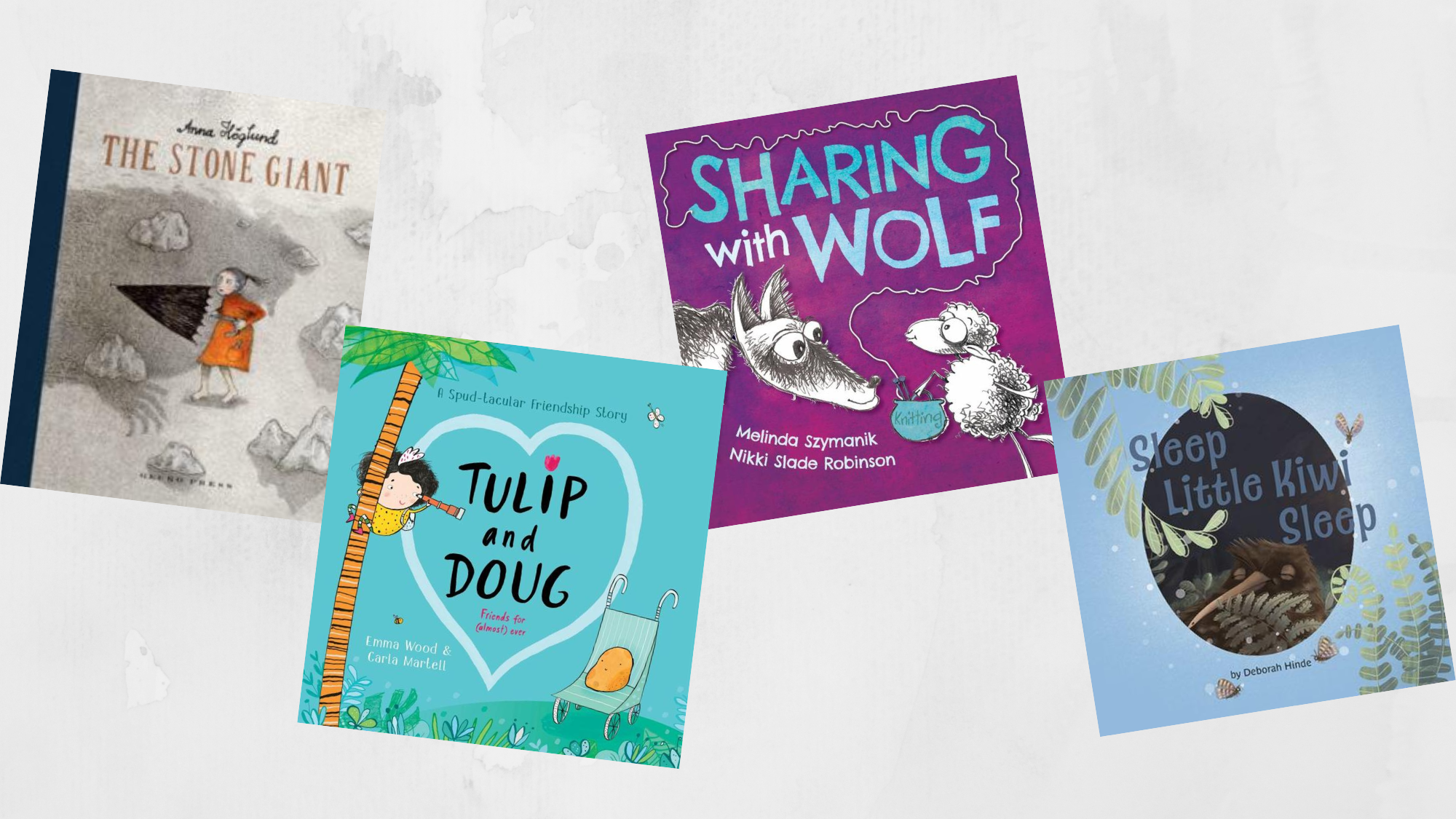
The Stone Giant, by Anna Höglund (Gecko Press)
Gecko Press have long had the slogan ‘curiously good books’, and The Stone Giant is no exception. Anna Höglund’s charming little tale draws on a classic Swedish story by Elsa Beskow, and acts as a reminder to never give up hope and to always be brave.
The unnamed child at the centre of the story has a swashbuckling knight for a father, but she is the one who ultimately saves the day and shows incredible strength of character. She’s self-sufficient—fixing everything in the house, swimming great distances when she’s got places to be – and more concerned for others than herself—her decision to leave her house when her candle burns out isn’t for her own sake, but for fear that her father won’t have his way home illuminated.
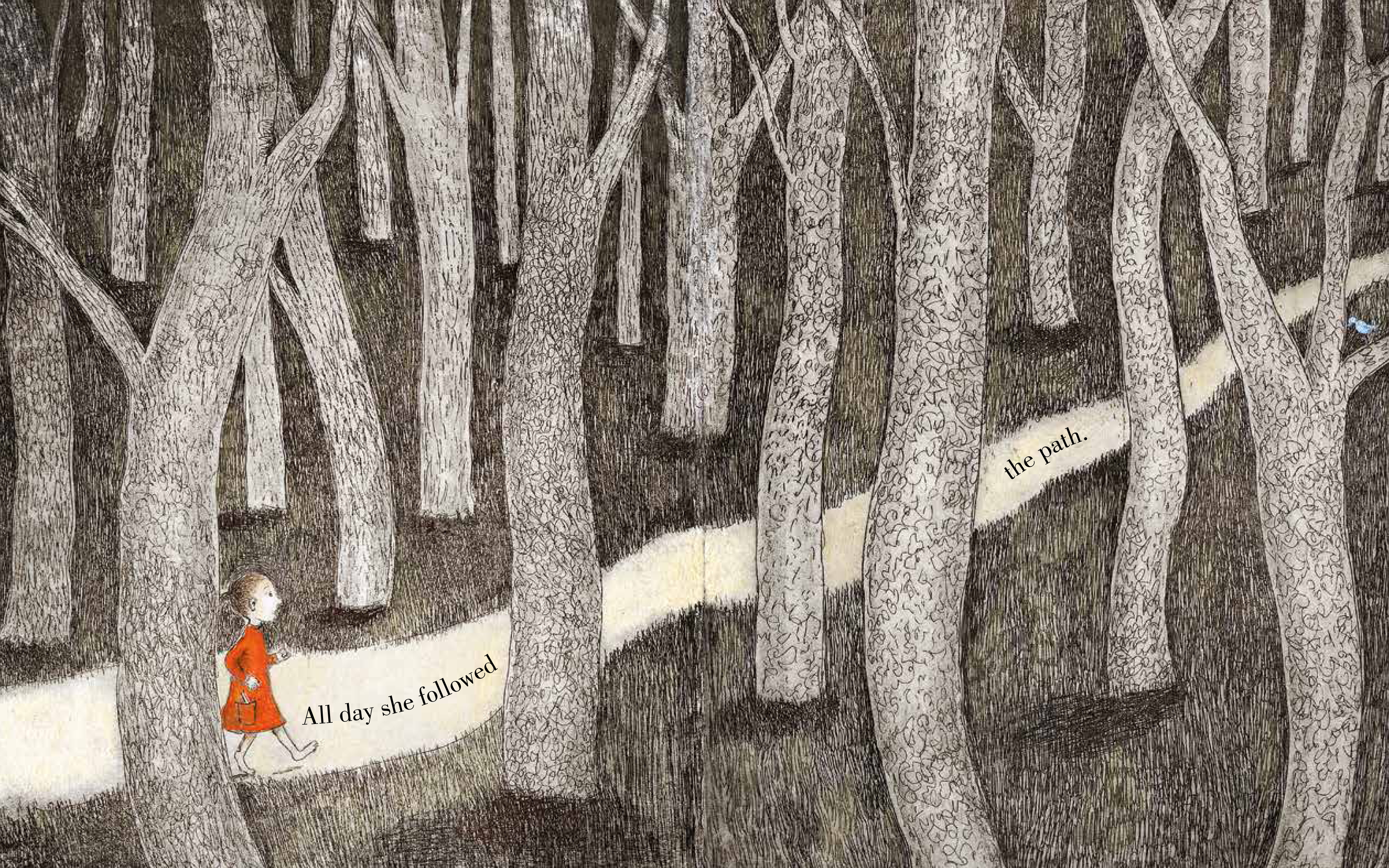
The illustrations are beautiful and whimsical, with a sketch-like quality and a muted colour palette. Each spread has a simple text-on-the-left, illustration-on-the-right consistency, aside from a couple of gorgeous full-bleed illustrated pages in the middle of the story, capturing the scope of our wee protagonist’s brave journey.
It really feels like a traditional story without being bogged down in old-fashioned language—presumably a factor of both the original Swedish writing and Julia Marshall’s capable and concise translation. And the fact that both the main character and the big bad villain are female is rather refreshing! When did we last see a giantess rather than a wicked witch or an evil stepmother, I ask you!
It really feels like a traditional story without being bogged down in old-fashioned language.
If I were to nit-pick one thing, the format is a little confusing, as the smaller size does make it seem, at first glance, to be more of a junior fiction title. That being said, as a more sophisticated little picture book, it is something that would suit the older end of the picture book demographic—so maybe it is a feature rather than a bug!
That format niggle is only worth mentioning to balance out everything else absolutely amazing about the production of this book. I’ve never been let down by the production of a Gecko title before, and they are certainly not slacking on this one. The paper is decadent and thick, the cloth spine, the shiny, almost reflective surface of the mirror on the back cover, the delicious swirling end papers that feel evocative of the marbling on turn-of-the-century book covers.
The paper is decadent and thick, the cloth spine, the shiny, almost reflective surface of the mirror on the back cover, the delicious swirling end papers . . .
I’ve told many a punter at Little Unity ‘you can’t go wrong with Gecko Press’ while brandishing one of their books at them, and The Stone Giant is no different. Sweet and strong in equal measure, and a little treasure to look at.
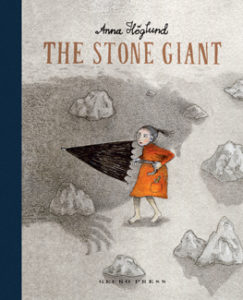
the stone giant
by Anna Höglund
Translated from Swedish by Julia Marshall
Gecko Press
RRP $27.99
Tulip and Doug: A Spud-tacular friendship story, by Emma Wood, illustrated by Carla Martell (Scholastic)
Tulip and Doug is an adorable tale for little book fans. From the outset, there’s something totally wonderful about a girl deciding to make a potato her best friend, and the fact that he’s called Doug is just icing on the cake.
Carla Martell’s illustrations are super fun and vibrant, hitting that right spot between current and not-too-likely-to-date-too-soon—not always an easy feat. The design makes good use of each whole double-page spread but plays around with the ways that it does so, and Carla plays with perspective in ways that really pull you into the story and give it dimension.
It’s not a rhyming story—I have so much respect for children’s book authors who know not everything has to be in rhyme and that not everyone is a rhyme guru!—but it does jump along nicely, and it’s peppered with words that add a little extra fun and vocab-widening like ‘rascal’ and ‘expedition’ and ‘giddy’.
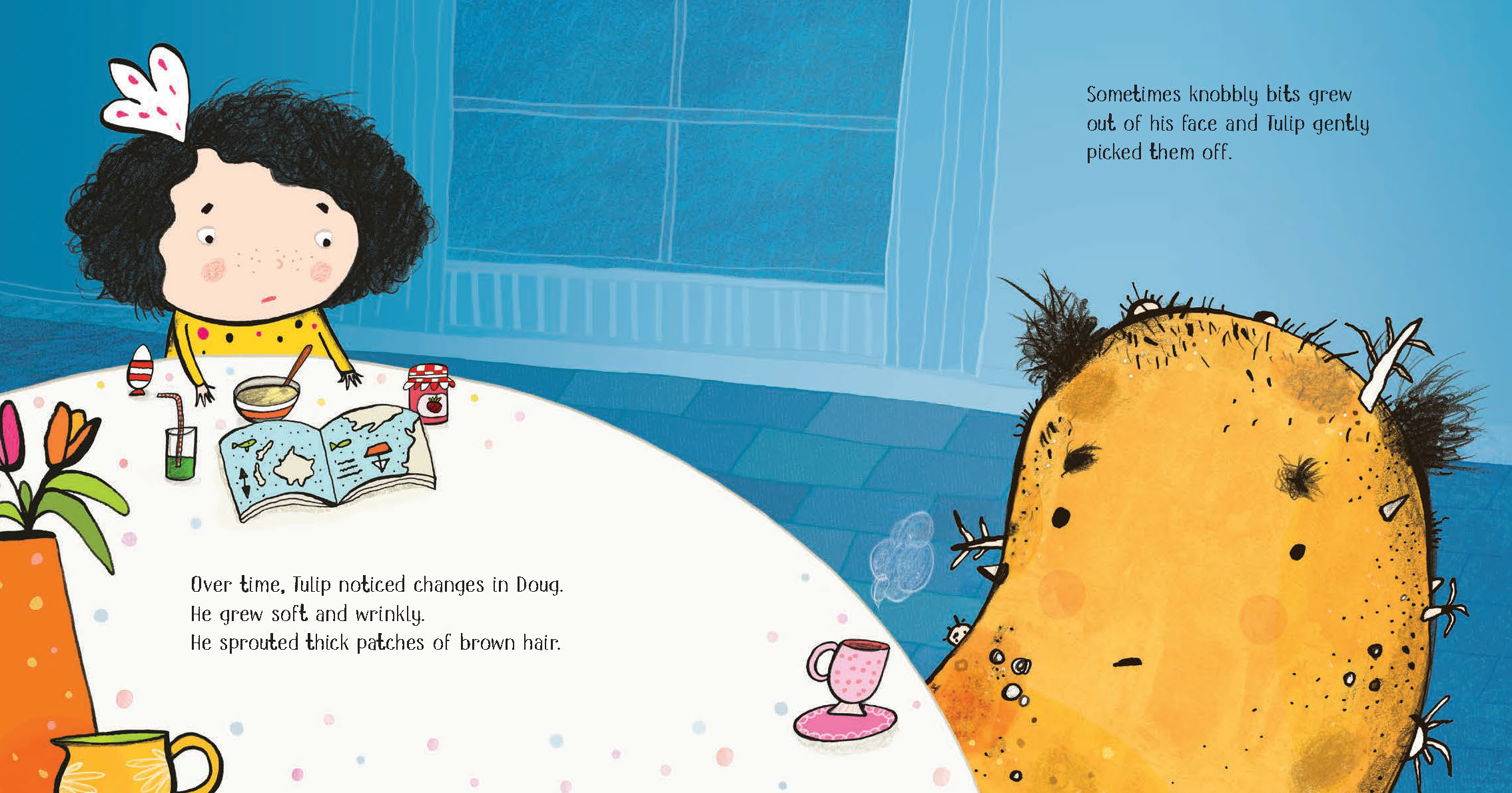
This book didn’t go quite where I expected it to—not the rip-roaring surprise twist of other picture books, but rather, I definitely was expecting there to be a realisation that Doug had fully gone to seed in his unknown garden home and propogate a new generation of Baby Dougs for Tulip to play with. Nope, no further potato action, just Tulip and her new mate and his pet rock Susan. Maybe a morale of the story is that rocks make better inanimate friends than potatoes?
I can’t quite decide if it could be well suited as a resource to spark a very very initial conversation about ageing and death, or perhaps one about how sometimes friends come and go. Maybe it’s not meant to be that deep, though—but something that introduces those kinds of concepts without being too didactic is always a plus!
I can’t quite decide if it could be well suited as a resource to spark a very very initial conversation about ageing and death, or perhaps one about how sometimes friends come and go.
This is a fun and poignant little story for preschoolers, and maybe it will result in some kids taking it upon themselves to start naming and loving their vegetables a little more—although hopefully scoffing them rather than letting them get hairy and spot-ridden, and leaving the long-term friendships to rocks and real-life pals.
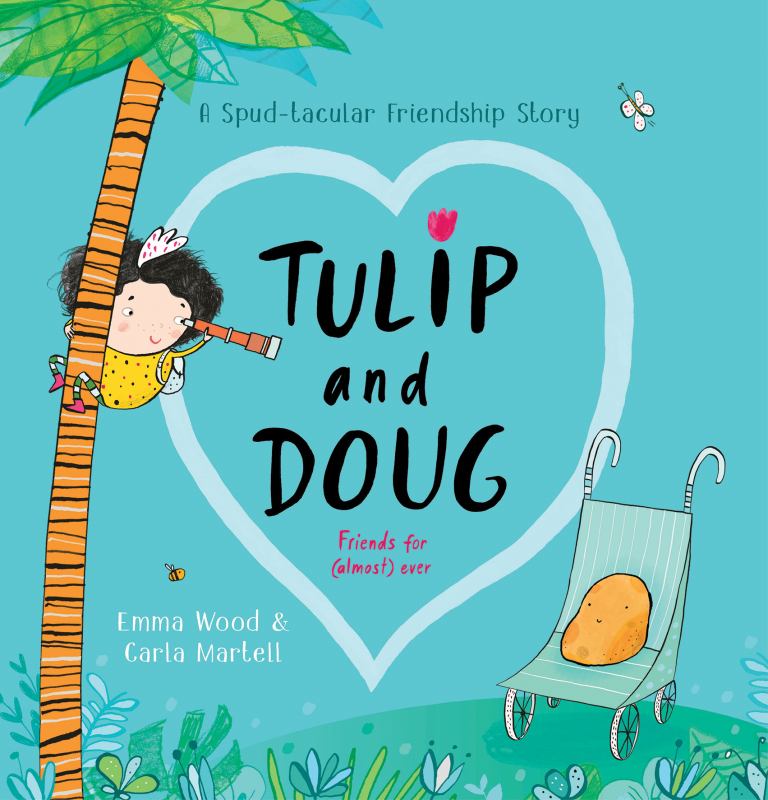
tulip and doug—A spud-tacular friendship story
by Emma Wood
Illustrated by Carla Roberts
Published by Scholastic NZ
RRP $19.99
Sharing with Wolf, by Melinda Szymanik, illustrated by Nikki Slade Robinson (Scholastic NZ)
This one is dark and I love that about it!
Wolf’s looking for a flatmate—’It cost too much to live alone.’ No arguments there, Wolf. But knocking on the door and insisting he be considered is Lamb, who is ready to leave his flock and start his own life. He plays up his best attributes, and really shows that he’s willing to go the extra mile—there must be a rental shortage wherever Wolf and Lamb call home. But Wolf is quite insistant that it can’t possibly work. After all, it’s in her nature to eat sheep.
Nikki Slade Robinson’s distinctive illustrations meld well with Melinda Szymanik’s brand of humour. Her sketchy style has the potential to feel a little uneasy, which is totally appropriate to the tone of the story. Spoilers: Lamb manages to convince Wolf to give him a go; Wolf does, as expected, succumb to her nature.
Nikki Slade Robinson’s distinctive illustrations meld well with Melinda Szymanik’s brand of humour.
It’s really fun to read aloud, although I did trip up at one point when the sheepnotist is giving Wolf dreams of sheep ‘sharing’ rather than ‘shearing’. But I suppose if the end-goal is for Wolf to come round to the idea of sharing her home with Lamb, it does sort of work. Generally speaking, though, it’s got playful language that is integrated seamlessly with the illustration—a mark of great book design, so ka pai Scholastic!
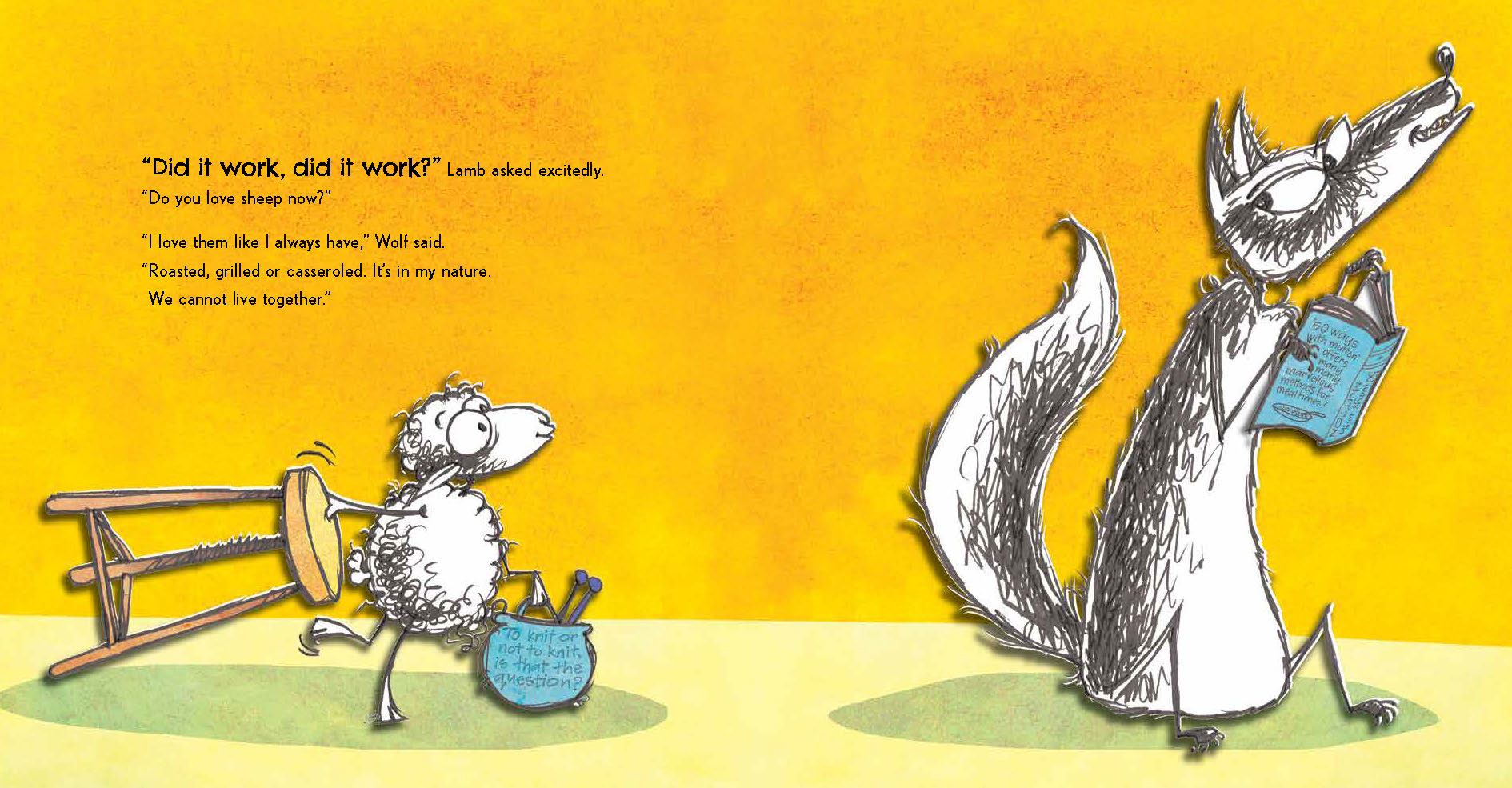
Like with The Stone Giant, it’s refreshing to see a bit of gender reversal from your typical wolf-oriented story—this book’s wolf is female, while the flat-hunting lamb is male. You could probably write a whole other piece about the potential patriarchal underbelly of the story—male character unwilling to take no for an answer, continuously insisting that he’d be totally fine even as he and the female character both know that it’s not going to end well—but that might be a little too much close reading.
I know a few preschoolers in my life who would love this book, and I can’t wait to get them to give it a go: I’m prepared for shrieks, gasps, and giggles aplenty!
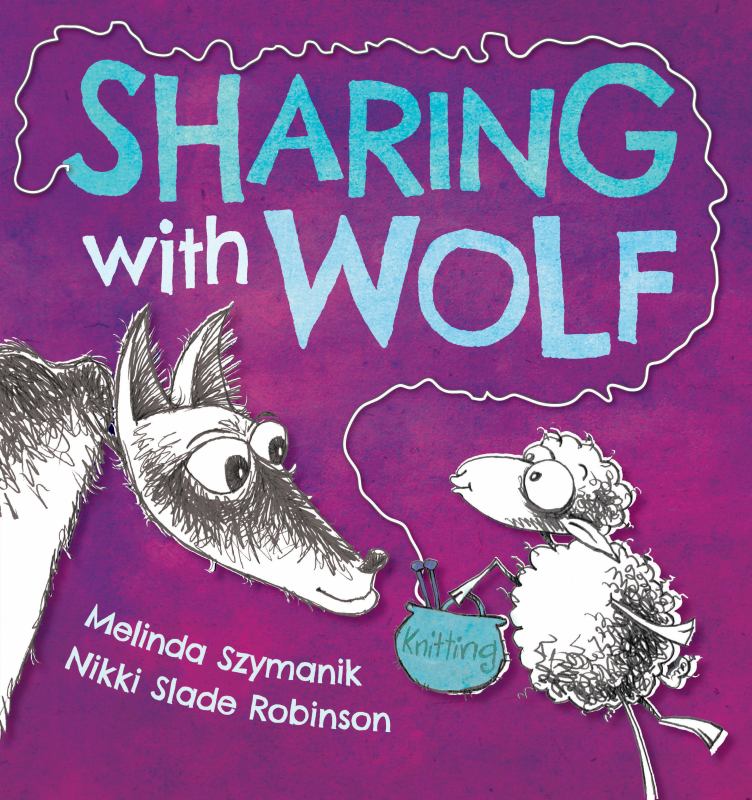
Sleep Little Kiwi, Sleep, by Deborah Hinde (PictureBook)
Having a variety of sweet, gentle bedtime stories to help get little ones to sleep is always a plus, and Sleep Little Kiwi, Sleep is a great addition to the Aotearoa-published options in this space.
The story begins with a bit of a bait and switch—the sun is sleepily setting and birds like Tūī are heading to bed—and then, out comes a little kiwi from his burrow, ready to start his night of frolicking. He catches up with all kinds of fellow nocturnal creatures, who all get to be known by their Māori names—Wētā, Pekapeka, and even nasty Toriua (although Ruru saves Little Kiwi’s bacon on that front).
The story begins with a bit of a bait and switch—the sun is sleepily setting and birds like Tūī are heading to bed—and then, out comes a little kiwi from his burrow…
Most of the spreads start off with a series of three evocative verbs, to start off a new fragment of story, although the patterning is a bit irregular. Some pages use three completely different ones (‘wriggle, squirm, crawl’), and others use repetition (‘flit, flutter, flit’), while there’s also a mix of rhyme (‘twirl, whirl, swirl’), onomatapoeia (‘scritch scratch, scratch’) and just regular old verbs (‘twitch, tremble, twitch’). They still work well to help bring the story to life, but it felt like it could have used slightly more shaping to really bring those phrases together.
I always appreciate proper macron usage in books, and am always a little extra pleased when I see independent publishers do it, even on words where they could get away without. You do, after all, see plenty of stories that ought to be about wētā (the bug) and tūī the bird) but that are instead about weta (poo) and tui (string). Anything that helps parents pronounce reo Māori words more correctly is a plus in my book.
I always appreciate proper macron usage in books, and am always a little extra pleased when I see independent publishers do it, even on words where they could get away without.
Deborah Hinde is behind both the artwork and the words, and the two work really well together. She manages to bring life and light to the night-time setting of the story, without making it too energetic—it’s still a bedtime story, after all. At the end of the night, as dawn starts to break and tūī start singing again, Little Kiwi goes back to his home to tuck up into bed, just like your little one will hopefully be ready to do once you finish this lovely story.
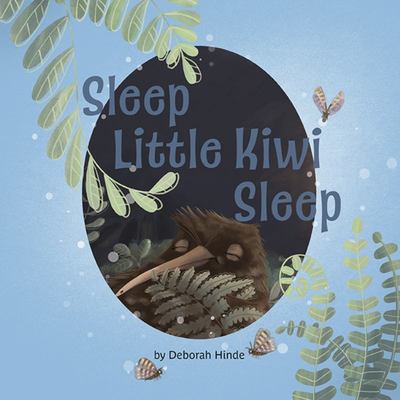

Briar Lawry is an English teacher and writer from Tāmaki Makaurau. She worked in bookshops for years, most notably Little Unity, and judged the NZCYA Awards in 2020. She was also one of the editors of The Sapling between 2019 and 2023.



